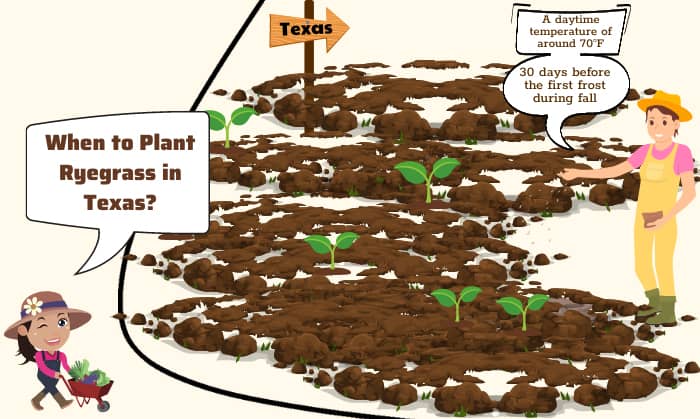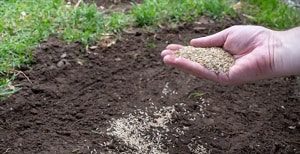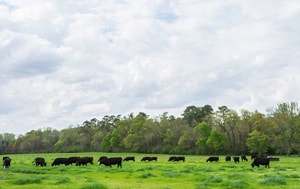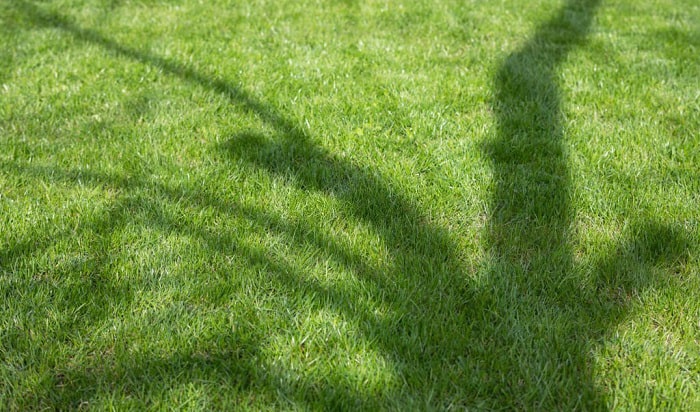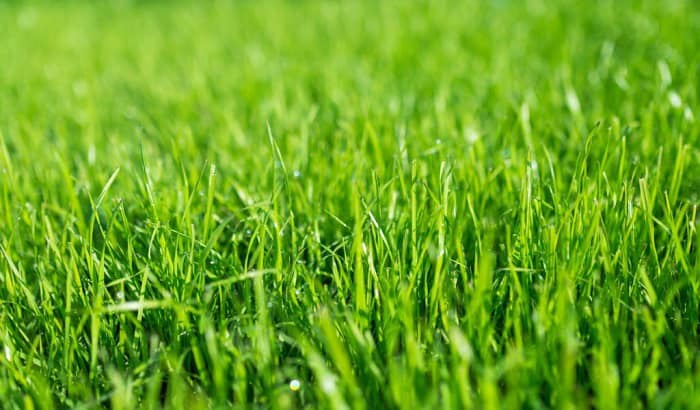Both warm and cold-season grass can thrive well in Texas, thanks to the state’s humid summers and cold winters.
However, if you only grow summer turf, it will become dormant during winter, preventing you from having a lush lawn for the entire year.
That’s why learning when to plant ryegrass in Texas is essential. It will play a significant role in covering up your ground during chilly periods.
For proper growth, it is best to sow ryegrass at a daytime temperature of around 70°F, 30 days before the first frost during fall.
Table of Contents
- 1. Plant Ryegrass Seed at a Daytime Temperature of Around 70°F
- 2. Grow ryegrass 30 days before the first frost date in your region.
- Does Winter Rye Grass Die in the Summer?
- How Late Can You Plant Winter Rye in Texas?
- What is the Best Winter Rye Grass Seed for Texas?
- What Are the Benefits of Planting Ryegrass?
- Conclusion
1. Plant Ryegrass Seed at a Daytime Temperature of Around 70°F
- Sow them once the air temperature becomes favorable.
Whether the ryegrass is perennial or annual, both are the best cold-season turf to patch your inactive lawn.
The ideal temperature for them is a daytime condition of around 70°F and more than 50°F at night. Air weather between these is most likely to happen once fall comes.
Ryegrass seeds germinate well during this season, while summer grass goes dormant at this time.
That’s why when you plan to plant rye grass seed in Texas, fall is best. The plant will have lots of nutrients, since your primary grass is inactive.
- Sow them in a proper soil temperature and condition.
The best time to plant ryegrass is when the soil temperature is on a scale of 60-70°F because it helps them grow well when the ground is still mild.
Well-drained soil is also ideal for healthy germination. Therefore, amend your soil to fit this condition and sow seeds in the rich ground.
As for the earth type, one good thing about ryegrass seeds is that they are not picky about where you will plant them.
They can thrive in either acidic or alkaline soil with a pH range of 5.5 to 7.5.
Read more: Best time to plant grass seed in other states such as Ohio, Michigan, and North Carolina,…
2. Grow ryegrass 30 days before the first frost date in your region.
The perennial and annual ryegrass Texas planting season usually starts in fall, around October to early November.
Sowing seeds 30 days before the first frost date in your area is the optimum winter rye grass Texas planting calendar, and gardeners should follow it for proper growth.
For example, if you live in Dallas in North Texas, sow your seeds on October 21 since its first frost date is November 20.
However, since Texas is a large state, the average start of frost often varies across regions.
San Antonio of South-Central Texas’s last frost date is a little earlier than in Dallas. Its first frost starts on November 12, so sowing ryegrass around October 13 is ideal.
Therefore, if you plan to sow grass seeds once fall comes, find out first the average start of frost in your area to know the proper ryegrass planting dates.
Does Winter Rye Grass Die in the Summer?
- The perennial winter ryegrass doesn’t die in summer because it can come back each year.
However, since it is a cool-season turf, it thrives best in cold climates, and this type of ryegrass in Texas summer will typically go dormant because of high temperature.
But you don’t need to worry about when it will grow back because once the cool weather starts again, it will begin flourishing.
- Annual ryegrass, however, is another case because it grows only for one season.
It means that when you plant annual ryegrass in the fall, this turf will die the following summer.
Reseeding the soil again with this type of ryegrass is the best way to grow it for another season.
How Late Can You Plant Winter Rye in Texas?
As I’ve said earlier, the proper planting window is four weeks before the first frost date in your region.
Closely following the planting calendar is essential because when you plant ryegrass after the first frost, its growing process will be hampered.
When the grass grows slowly, you might expose it to freezing temperatures, making it difficult for the plant to establish roots, or the ryegrass might die because of the frigid weather.
What is the Best Winter Rye Grass Seed for Texas?
If you prefer to use the type of turf that has a short lifespan and will die off once spring comes, then choosing the annual ryegrass is the better option over the perennial one.
The Pantera type of annual turf, to be more specific, is the most recommended in Texas because it is easy to grow and dies fast in spring.
Not only will it not compete with your warm-season grass, but it also has a vivid color that suits your lawn.
What Are the Benefits of Planting Ryegrass?
- Restrains the weeds from sprouting.
Sowing ryegrass at the proper time will help it establish an excellent root system underground that keeps the soil fertile. Plus, the weeds won’t have a chance to grow.
- It protects your dormant summer grass from freezing temperatures.
Once the ryegrass grows and gets established, the thick, lush lawn can protect your warm-season turf from too-low temperatures, which will help them survive the cold climate.
- Feeds the livestock
Ryegrass is a suitable alternative for feeding livestock once warm-season crops go dormant during the winter.
Since it contains proper protein and nutrients, it is healthy and safe for the animals to eat.
- Works as green manure
Ryegrass can also be excellent manure because it gives sufficient nutrients and nitrogen to the soil, making it healthy and beneficial for the next crop you intend to grow.
Conclusion
Now that you know when to plant ryegrass in Texas, you no longer need to worry about overlaying your summer turf to keep having abundant grass in your yard.
It doesn’t matter whether you plan on sowing annual or perennial ryegrass because the important thing is you now know the best time to plant them for proper growth.
Wait until fall arrives and sow seeds four weeks before the first frost date, while the temperature is mild.
I hope you learned enough from this post to create a lush lawn from winter through fall!

Hi, I am William – Floridayards’ digital content creator. My job is to find answers to all your concerns with thorough research and our team’s expert advice. I will also bring you honest reviews on the best products and equipment for raising your beautiful garden. Please look forward to our work!


